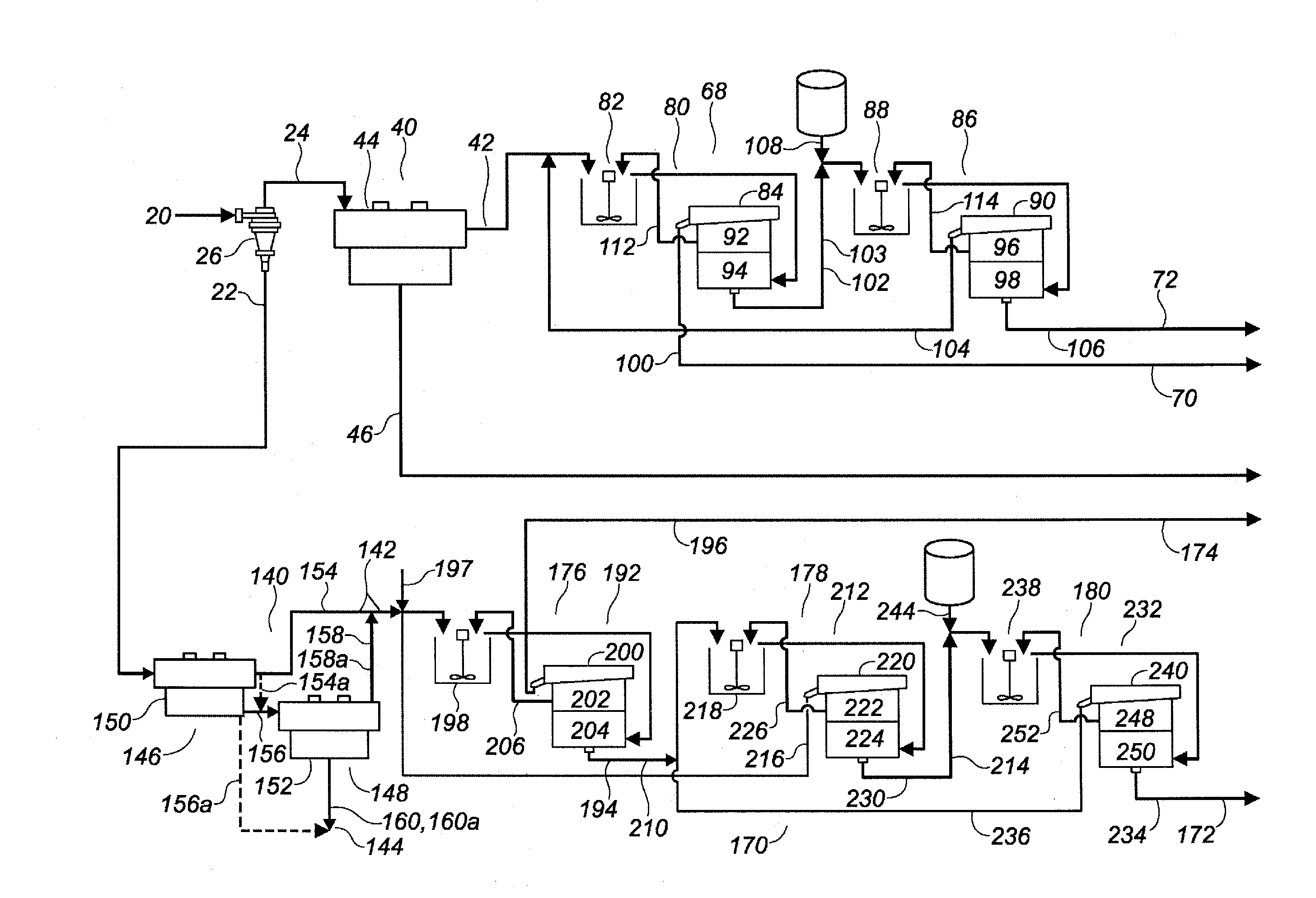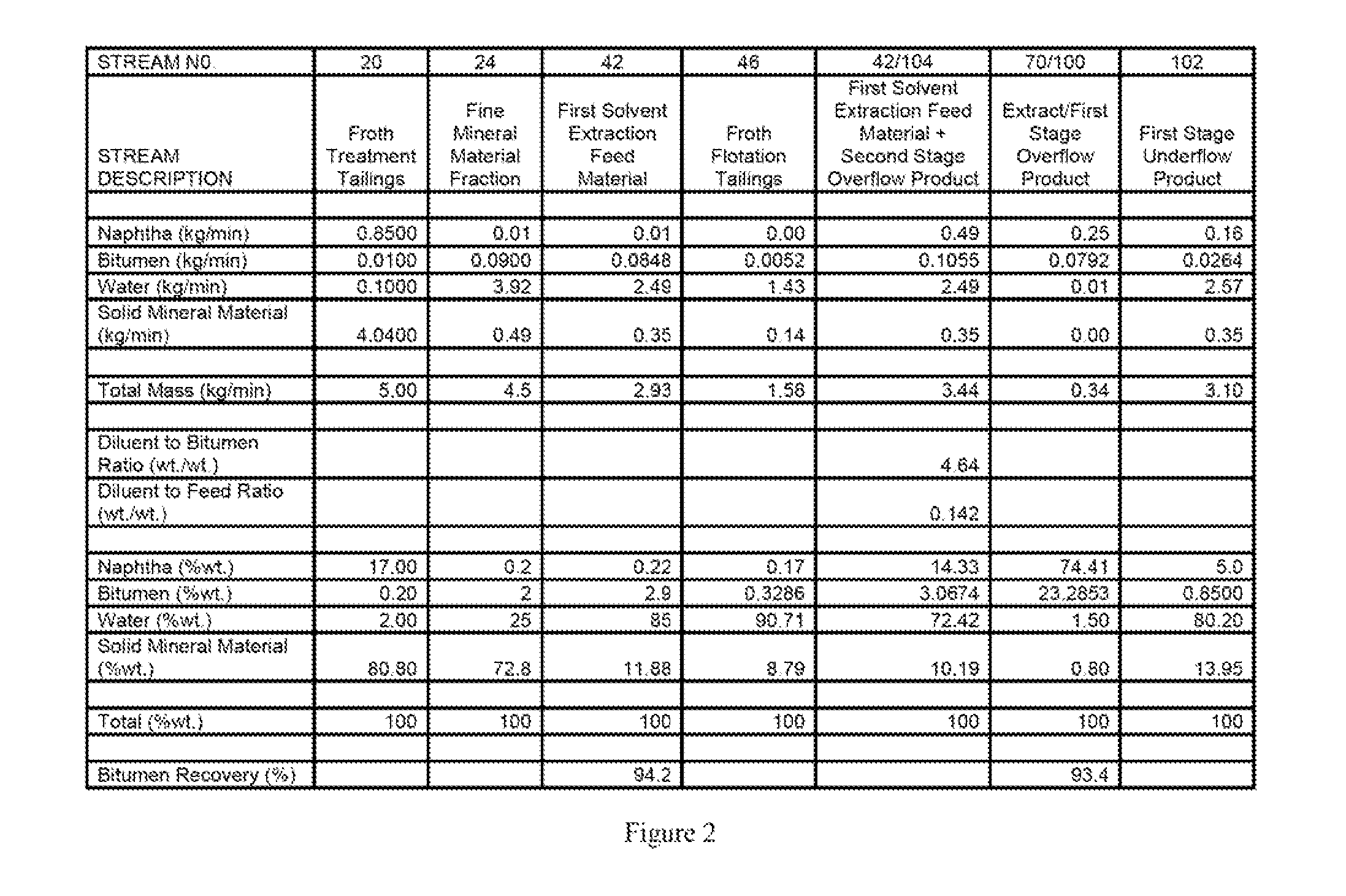Methods for separating a feed material derived from a process for recovering bitumen from oil sands
a technology of oil sands and feed materials, which is applied in the direction of liquid hydrocarbon mixture production, solid separation, petroleum industry, etc., can solve the problem that the amount of bitumen from the original oil sands ore is typically lost to the froth treatment tailings, and achieves the effect of affecting the quality of the extra
- Summary
- Abstract
- Description
- Claims
- Application Information
AI Technical Summary
Benefits of technology
Problems solved by technology
Method used
Image
Examples
Embodiment Construction
[0117]The present invention is directed at methods for separating a feed material comprising solid mineral material, water and bitumen, wherein the feed material is derived from a process for recovering bitumen from oil sands. The feed material may consist of, may consist essentially of, or may be comprised of a bitumen froth, whole froth treatment tailings, a fraction of whole froth treatment tailings, and / or any other suitable material derived from oil sands.
[0118]The methods of the invention are solvent extraction methods which are performed in one or more solvent extraction stages.
[0119]Exemplary embodiments of the invention are hereafter described with reference to FIG. 1, in which a coarse mineral material fraction and a fine mineral material fraction of froth treatment tailings are both processed using the methods of the invention.
[0120]In the exemplary embodiments depicted in FIG. 1, the froth treatment tailings result from a process for recovering bitumen from oil sands. In...
PUM
| Property | Measurement | Unit |
|---|---|---|
| density | aaaaa | aaaaa |
| viscosity | aaaaa | aaaaa |
| particle size | aaaaa | aaaaa |
Abstract
Description
Claims
Application Information
 Login to View More
Login to View More - R&D
- Intellectual Property
- Life Sciences
- Materials
- Tech Scout
- Unparalleled Data Quality
- Higher Quality Content
- 60% Fewer Hallucinations
Browse by: Latest US Patents, China's latest patents, Technical Efficacy Thesaurus, Application Domain, Technology Topic, Popular Technical Reports.
© 2025 PatSnap. All rights reserved.Legal|Privacy policy|Modern Slavery Act Transparency Statement|Sitemap|About US| Contact US: help@patsnap.com



